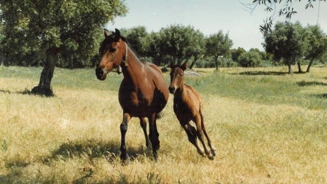How are horses chosen for the Portuguese School of Equestrian Art?
22 Apr 2024
Anyone who visits the Portuguese School of Equestrian Art, or who watches its shows, realises - even if their knowledge of equestrian art is limited - that the School's horses are different. They are exceptional beings, of unparalleled beauty and extraordinary cunning. But how are these animals chosen?
First of all, you need to keep one thing in mind: all of the horses at the School are of the Lusitano breed. Within the Lusitano breed, they are also of the Alter Real lineage, the best-known breed. It is the world's oldest breed of saddle horse. It has a natural aptitude for Obstacles, Working Equitation, Competitive Driving and even Dressage.
Another point to take into account: all of the horses at the Portuguese School of Equestrian Art are Lusitanos from the Alter Real Stud Farm. It is there that they are born, raised and trained - a practical and educational process that helps the animal to form its character and have an adequate and harmonious development.
Each horse at this Stud Farm is the result of years of selection and idealised breeding. In fact, the pairing of stallions with the mare relies on the contribution of a team from the Portuguese School of Equestrian Art, which, based on many years of experience with these animals, knows their best qualities. The goal is to achieve constant improvement of the Lusitano-Alter line, which served the Royal Academy - the School's predecessor - in the 18th century.

In the autumn when they celebrate their 4th birthday, the horses, already at an advanced stage of training, are evaluated by this team from the Portuguese School of Equestrian Art, which travels to the Alter Stud Farm with the aim of selecting those that exhibit the most potential to serve the School.
Each of these animals will have their own rider, or “Picador”, who will be responsible for the animal's inclusion in this new reality and in the teaching method of the Portuguese School of Equestrian Art. In the early days, the work mainly had a social dimension, with the main objective being for the horse to get used to the environment and the work in the riding ring with other older horses and the material used, such as the saddle cloth, suspended stirrups and braids.
In the first phase of teaching, called “low school”, the horse progresses in training - executing the three basic gaits in balance (walk, trot and gallop) - and in work in the riding ring - based on geometric figures, such as the circle, and also in lateral gaits, shoulder-in and isolated handovers.
When confirmed in the “low school”, the horses perform for the first time in a show, on the new horses’ carousel. The Portuguese School of Equestrian Art galas take place every month - you can check the entire programme on the Parques de Sintra website.
